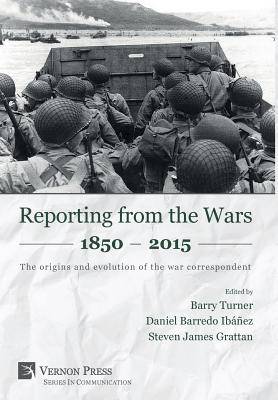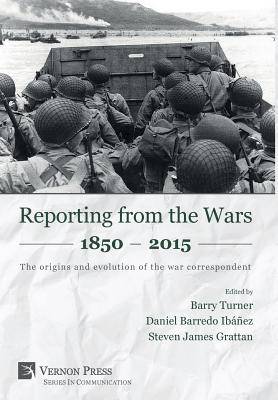
- Retrait gratuit dans votre magasin Club
- 7.000.000 titres dans notre catalogue
- Payer en toute sécurité
- Toujours un magasin près de chez vous
- Retrait gratuit dans votre magasin Club
- 7.000.0000 titres dans notre catalogue
- Payer en toute sécurité
- Toujours un magasin près de chez vous
Reporting from the Wars 1850 - 2015
The origins and evolution of the war correspondent
Description
From the foundations of the world's first great empires to the empires of today, war has preoccupied human civilisation for as many as 4000 years. It has fascinated, horrified, thrilled, confused, inspired and disgusted mankind since records began. Provoking such a huge range of emotions and reactions and fulfilling all the elements of newsworthiness, it is hardly surprising that war makes 'good' news.
Modern technological advancements, such as the camera and television, brought the brutality of war into the homes and daily lives of the public. No longer a far-away and out-of-sight affair, the public's ability to 'see' what was happening on the frontline changed not only how wars were fought but why they were fought. Even when a war is considered 'popular, ' the involvement of the press and the weight of public opinion has led to criticisms that have transformed modern warfare almost in equal measure to the changes brought about by weapon technology. War reporting seeks to look beyond the official story, to understand the very nature of conflict whilst acknowledging that it is no longer simply good versus evil.
This edited volume presents a unique insight into the work of the war correspondent and battlefield photographer from the earliest days of modern war reporting to the present. It reveals how, influenced by the changing face of modern warfare, the work of the war correspondent has been significantly altered in style, method, and practice. By combining historical analysis with experiences of modern day war reporting, this book provides an important contribution to the understanding of this complicated profession, which will be of interest to journalists, academics, and students, alike.
Spécifications
Parties prenantes
- Editeur:
Contenu
- Nombre de pages :
- 292
- Langue:
- Anglais
- Collection :
Caractéristiques
- EAN:
- 9781622731015
- Date de parution :
- 19-06-18
- Format:
- Livre relié
- Format numérique:
- Genaaid
- Dimensions :
- 152 mm x 229 mm
- Poids :
- 544 g

Les avis
Nous publions uniquement les avis qui respectent les conditions requises. Consultez nos conditions pour les avis.





